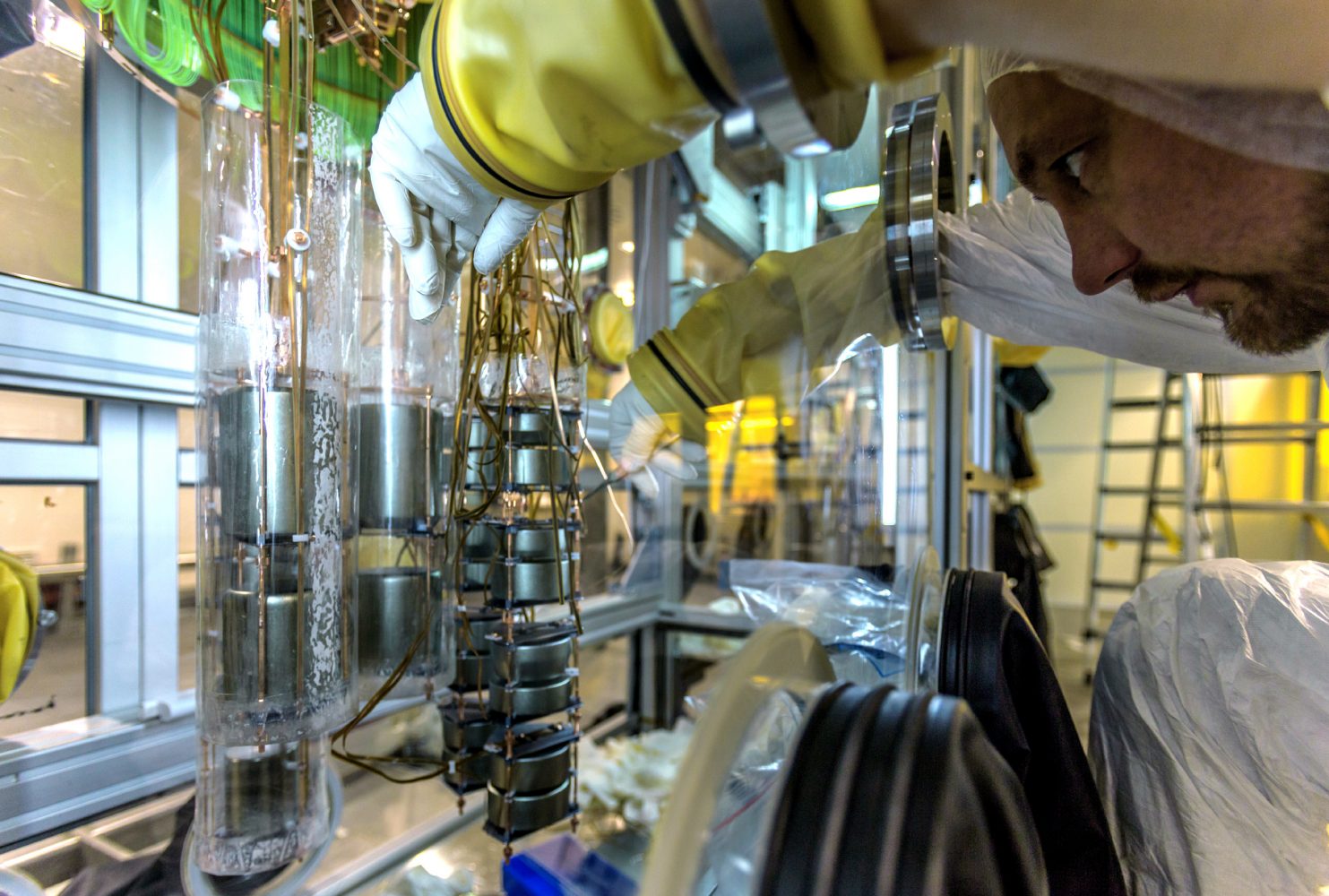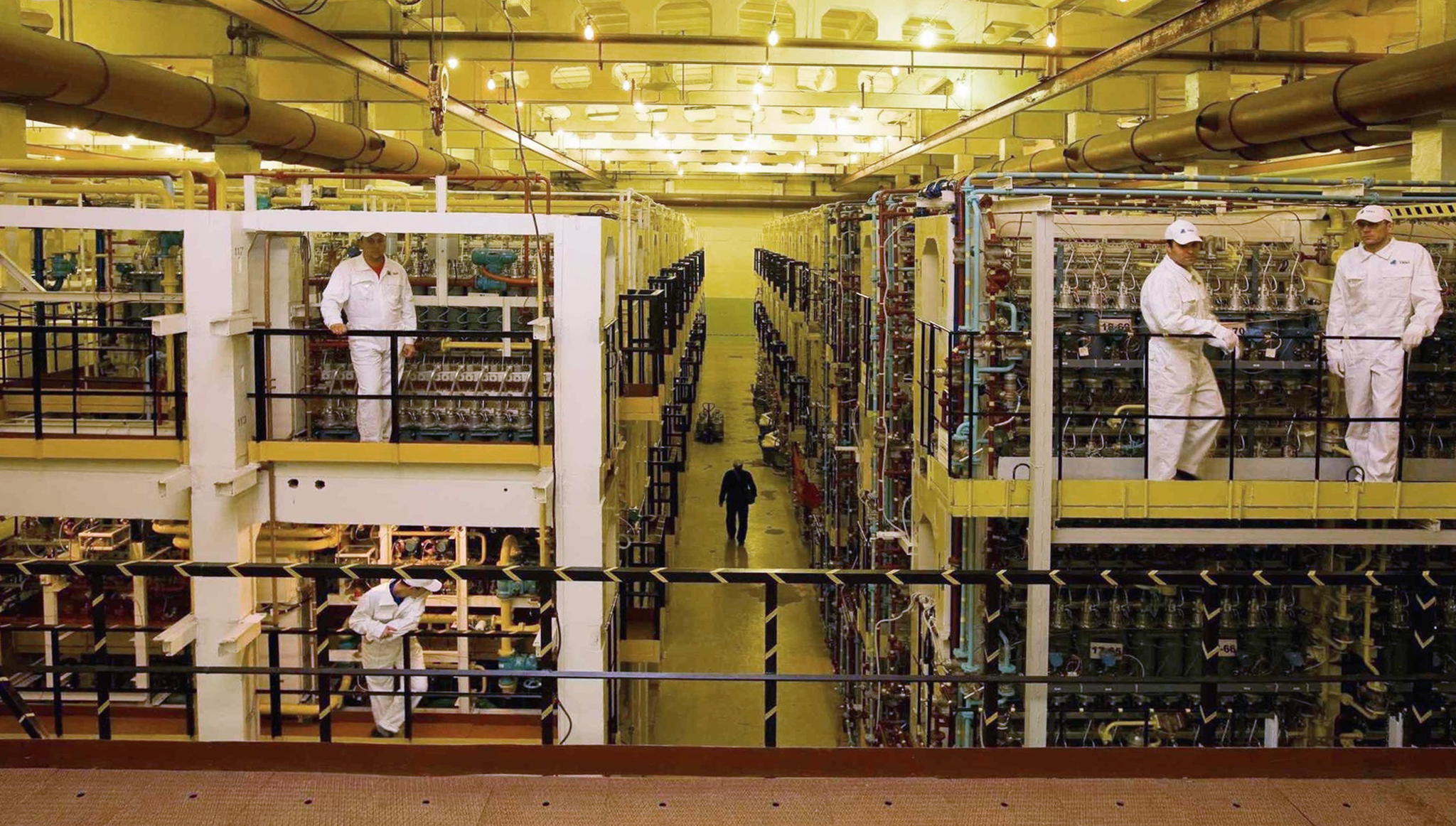
Isotopes for Science
back to contentsLEGEND
Neutrino physics is receiving an increasing attention. It is supposed to solve the baryon asymmetry problem, particularly why the observable universe is dominated by matter although, according to the Standard Model, antimatter particles share the same mass as their matter counterparts.
Neutrino is expected to be identical to its antiparticle, and therefore it could be the source of baryon number violation. This theory provides for neutrinoless double beta decay, a type of radioactive process in which two neutrons transform into two protons and two electrons only, i.e. without a neutrino. The LEGEND Collaboration aims to register this process. It was established as a follow-up to the European GERDA and North American MAJORANA collaborations. A range of research institutions focused on the same experiment also support the joint team – currently the collaboration unites 50 international institutions, including 30 Russian teams. The collaboration offers a clear advantage of combining scientific and financial resources.
 A laboratory in Gran Sasso, Italy, is experimenting with detectors made of highly pure germanium, which is enriched with germanium-76 isotope.
A laboratory in Gran Sasso, Italy, is experimenting with detectors made of highly pure germanium, which is enriched with germanium-76 isotope.
Both GERDA and MAJORANA used detectors made of germanium-76 produced at the Electrochemical Plant (ECP, a Rosatom subsidiary). ECP will supply isotopes for the new experiment but in a larger quantity. In late April, Rosatom’s Izotop made a large shipment of around 20 kg of germanium-76. The collaboration aims to buy nearly 1,000 kg of isotopes soon.
LEGEND imposes very strict requirements on isotope storage and transportation. Rosatom designed a special underground interim storage facility to protect germanium-76 isotopes from cosmic radiation. Additionally, ECP created a transportation cask to maintain the same storage conditions during transportation.
AMoRE and CUPID
The Electrochemical Plant also manufactures isotopes for AMoRE, another large project focused on properties of neutrinos. The international collaboration brings together more than 100 scientists from 16 research institutions in Russia, China, Germany, South Korea, Pakistan, Thailand and Ukraine. Researchers are trying to detect neutrinoless double beta decay of another isotope, molybdenum-100. The experiment set up in an underground laboratory in Yangyang (South Korea) requires tens of kilograms of molybdenum-100.
In 2015, Rosatom’s Izotop signed a contract for the supply of molybdenum-100 for the AMoRE project to South Korea by 2021, with 80 kg out of 120 kg under the contract already received.
Izotop has recently started negotiating a contract for 300 kg of molybdenum-100 from Italy’s new collaboration CUPID. The collaboration designs a neutrinoless double beta decay experiment in an underground laboratory in Modane, France.
Other projects looking for neutrinoless double beta decay are being set up in the world, with other isotopes (xenon-136, selenium-82 and tellurium-130) involved. Since the Electrochemical Plant manufactures these isotopes too, talks to supply them are underway.
XMASS and WARP
Another intriguing area of physics is dark matter which, according to some scientists, accounts for a quarter of the Universe. Dark matter has not yet been observed directly despite numerous attempts, including experiments in the Large Hadron Collider and the Large Underground Xenon (LUX) experiment at the Stanford Underground Research Facility, PandaX in China, XENON100 in Italy, and experiments in the IceCube Neutrino Observatory at the South Pole. Since dark matter has not yet been detected, some researchers think we must radically revise the current model of the Universe.
Nevertheless astronomical observations of the last decades provide clear evidence that, apart from the Universe we can observe, there is also a hidden part. That is illustrated by the gravitational effects. Scientists assume that most of dark matter consists of particles with a mass of tens of giga-electronvolts, and these particles weakly interact with ordinary matter. These particles are called weakly interacting massive particles or WIMPs, and researchers are trying to trace them by their interactions.
Rosatom supplies isotopes required for the dark matter detection experiments such as
XMASS in the Kamioka underground observatory in Japan and WARP in the Gran Sasso Laboratory in Italy.
Izotop takes on the role of a critical link between isotope manufacturers (Rosatom’s companies) and consumers within and outside Russia. Izotop supplies its products to more than 100 companies from 30 countries and more than 600 companies in Russia. The company provides a comprehensive range of professional services related to isotope sales, irradiation devices and medical equipment.
The Electrochemical Plant is a global Top-5 producer of isotopes by gas centrifugation.
The plant offers end-to-end production services – from uranium extraction and centrifugation up to production of isotope gases for commercial purposes.
The Electrochemical Plant produces 107 isotopes of 21 chemical elements and has an expertise in production of radioisotopes with a high specific activity. Its output is reaching hundreds of kilograms per year. The Electrochemical Plant supplies its products to the USA, Canada, Europe, Korea, Taiwan, China, Japan, India, Australia, Jordan, Saudi Arabia, Uzbekistan and other countries.




